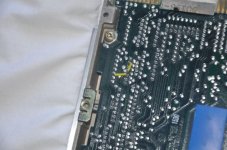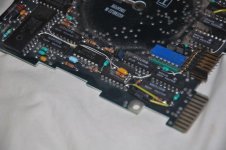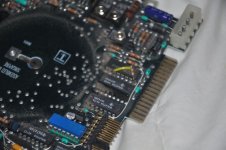modem7
10k Member
So you are still getting a 1780 error on start up.Removed those jumper wires, seems to make no difference.
From that we know that the 5170 is communicating with the controller, but what is failing is a 'recalibrate' operation.
You've checked the cabling, and at this point, lack of a terminator is the only known cabling issue.
Maybe that wiring did some damage to the drive (and hopefully not the controller).
It could be that in this case, a terminator is required. I can post you a terminator if you like, but presuming that you are in the States, it may take a while to get there.
On these old drives, a 'recalibrate' operation (and seek opertations) don't involve reading the surface of the platters. In fact, people with operational 5170 systems will discover that if they remove the data cable, running the 'seek test' part of certain diagnostic tools (e.g. SpeedStor) works. If they boot their 5170, the 1780 test passes, but they see the later 1790 test fail.
You could have a faulty control cable. Over many years, I've encountered a few faulty control and data cables.
This is where having spare drives/cables helps a lot - quickly isolating a problem cause down to a particular area.
If you let us know whereabouts in the world you are, it may turn out that a knowledgable forum member with working MFM drive lives very close by.
Testing the ST-225 is someone elses system is questionable due to the lack of terminator.





